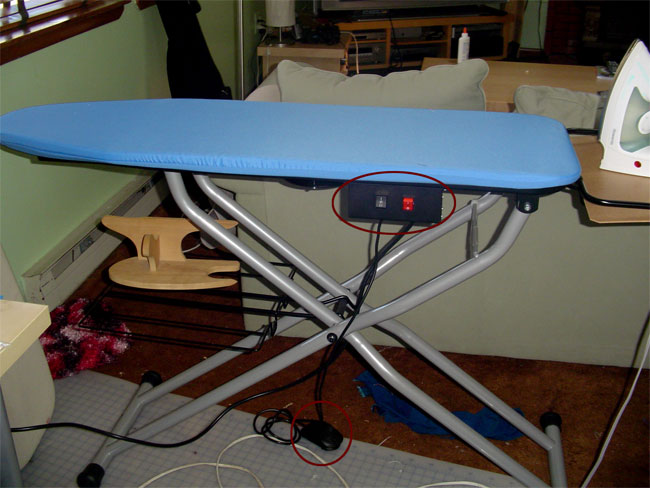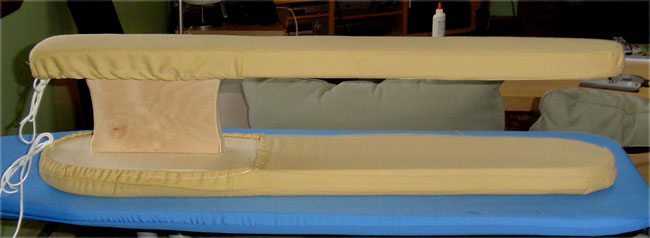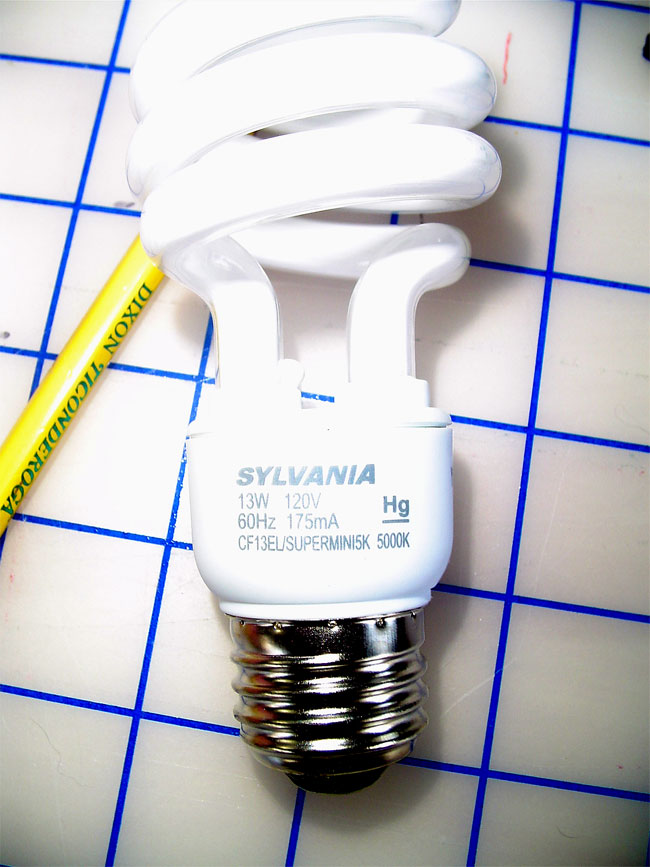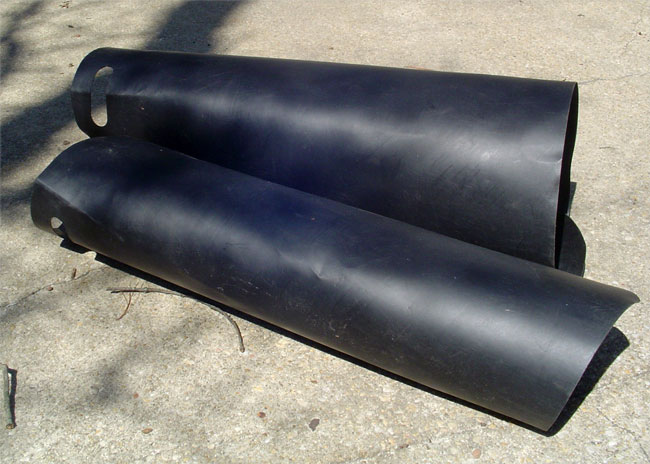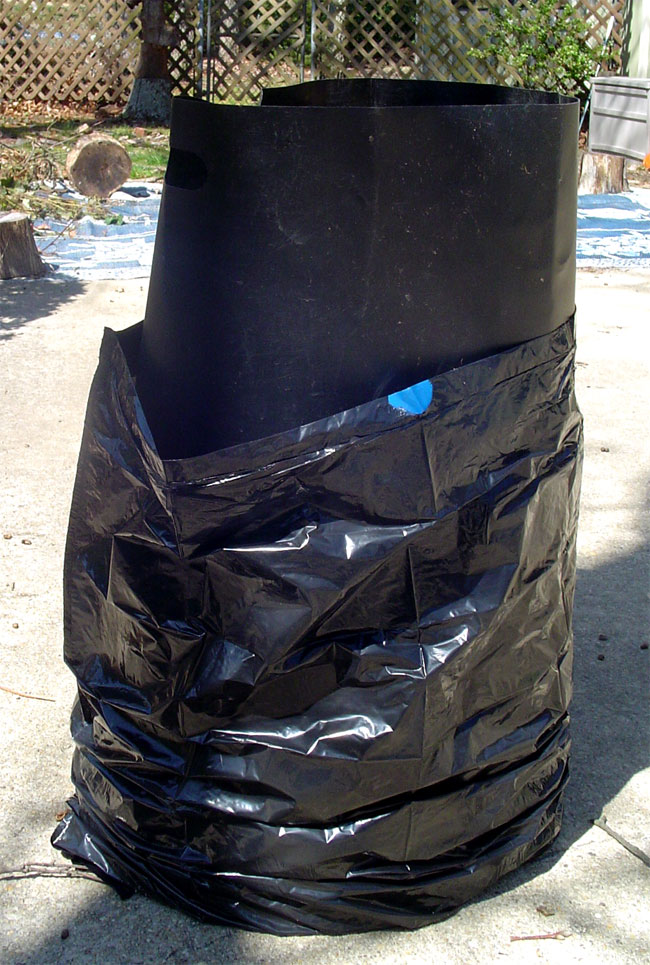I know that the allegory is an often disparaged form of argument, but for me it is almost essential. The allegory creates a visual picture in the mind of an often ethereal concept, and creates a connection that allows many of us to better recall the details of the argument itself. I’m all about visuals and connections, and allegories – good ones, mind you – are often helpful to me in understanding an intangible concept. As such, I often find myself creating allegories to strengthen my understandings, and this is one I thought of this morning that seemed worthy of sharing.
We all believe things, whether it is because we lack portions of knowledge (a common problem, since nobody knows everything!) or because we have a hope that would be supported by belief. Belief itself is not a problem. In fact, a belief that urges us towards better understanding or towards a positive attitude is probably a pretty good thing. What nudges belief into being a negative thing is when it is used in lieu of available knowledge, or when it is used to obscure available knowledge. Even then, it is only mildly harmful, in that it is belief held by an individual. Consequences of holding a belief in such circumstances are borne only by the person who holds them. What makes belief that replaces or represses knowledge harmful is when that belief (and the arguments for sustaining it despite contrary evidence) is spread to others. Knowledge unsought or misused can become more and more harmful the more it is spread. . .
I do many creative things, and find that the ever-expanding information about materials, uses, and techniques is sometimes even more enjoyable to discover than putting that information to use. However, as more is discovered, some older information is often found to be incorrect. This information, though, has usually been widely available and often used to teach beginners, which means that many people learned to do things poorly, which means that many people thought that they could never attain a good result, which led to many people thinking that they just couldn’t do something simple, which led to self-deprecation. “I tried, but I’m no good at it,” stops the conversation. Sometimes people will follow that statement with something more empowering; they might then talk about something in which they excel. Often it simply hangs in the air. The person who excels feels bad for reminding someone else of his or her failings. The person who has failed is reminded of her shortcomings. Any enlightenment is promptly snuffed out.
So what does this have to do with belief? Well, let me start with my allegory. (I know you were waiting with bated breath!)
I sew. I hunt for bargains. If I see something that appears to be a material I could use, and it’s a fabulous bargain, I might not worry too much about its makeup. After I get it home – and let’s assume it’s fabric for this story, although it could be nearly anything – I’ll wash it and dry it and see how it comes out. This way, I know that any chemicals that alter the appearance or hand or drape of the fabric have been taken out, and that any changes due to laundering have happened before I’ve put all the work into constructing an item. (Piece of knowledge – I know that there are chemicals used to make fabric easier to manufacture, or to make it more attractive on a sales floor. Piece of knowledge – certain fibers change during/after laundering, and even with the greatest care these changes can take place in subsequent launderings.) If I see these changes, I then need to put some more consideration into how I will use this piece.
When the laundering is done, the change the fabric has undergone might require me to treat the fabric differently. Let’s narrow it down to a single piece for this example – a shiny, stiff fabric in a lovely iridescent shade.
In the store, I see this piece, and it looks almost like a taffeta, although a bit lighter bodied. I may think it would be good for the skirt of a formal dress, and it’s 70% off and a unique color, so I buy it. There is no indication at the bargain fabric store of what it might really be, because the sale table is mixed remnants of all kinds. Once home, I pop it into the washer and dryer – formal or not, anything I make needs to be washable. The fabric comes out crazed with wrinkles, but incredibly soft and drapey. It bears little resemblance to the smooth, stiff piece I bought. (Piece of knowledge – even the stiffest shiny fabrics may come out like this, but only some can be restored to that state.) At this point, I need to decide if I’m going to find a way to work with it as is, or if I’m going to try to remove the wrinkles and/or restore some of the stiffness. If I’m being smart and thinking ahead, I’ll then take a small piece and do a burn test. The burned fabric will curl up or melt into little balls if it is an artificial fiber, but leave crumbled or flaky ash if it’s natural, a combination of these if it’s mixed. (Piece of knowledge – a low temperature iron is less likely to burn an artificial fiber, but won’t take out the wrinkles, while a high temperature iron might replace the wrinkles with a sheen on bumps like darts, folds, pleats, and seam allowances.) Before I ruin the whole piece trying to get the wrinkles out, I need to decide if the fabric can handle a temperature high enough to get the wrinkles out. If it can’t, I have the knowledge to re-imagine the fabric’s potential and use it for a different project. (Piece of knowledge – the fabric can be underlined to give it more body, or can be used in a manipulated form as it is in smaller areas than a full formal skirt. Piece of knowledge – I can also take advantage of the fabric’s properties and re-launder it in a manipulated form.)
This is an example of a set of beliefs that are challenged by knowledge, that change as more knowledge is gained, and that continue to offer hope as they changed. I believed that the fabric was shiny and stiff, and imagined it as one garment. When it came out of the dryer, I believed that I could iron out the wrinkles and imagined it as something else. When I did the burn test, and found that it was too delicate to withstand ironing, I was once again able to imagine a different purpose for it, based on my knowledge of sewing and fiber arts. My beliefs all started with a lack of knowledge (Will it come out of the wash like it went in? Will I be able to get it back to the way it was? What is this stuff made of, anyway?) and hope (imagining throughout the process all the wonderful things the fabric could become) that were changed as knowledge grew. Additionally, at no point did the beliefs cause any harm beyond increasing the amount of time and thought I had to put into using the fabric (or requiring me to go out shopping again if the project had to be done regardless and this fabric wouldn’t work for it!)
Now, how in the world could a belief in the properties of a fabric, or not knowing how a particular fabric needed to be treated or used be a harmful belief, you might ask. Well, consider if I were to love that fabric enough to open a store whose entire inventory consisted of shiny, stiff fabrics. Consider if I were to stock that store with fabrics of all different fiber contents, labeling none of them, and then advertise myself as a fabric store for fancy dress fabrics. I could even have regular fantastic sales events to draw people in. Even beginners would be tempted to try whipping up wedding dresses and prom gowns.
These beginners, though, are not going to know that some fabrics won’t withstand even the most delicate of cleanings, or behave differently from each other, or look just fine until they attempt to press the final garment. People with knowledge might bypass my store entirely, or ask for cut samples to test at home before buying, or decide the sale price makes something worth buying no matter what it turns out to be. No harm there. People who have some knowledge might decide to not clean the fabric at all, treat it very carefully, and understand that the garment might be worn only once. People with very little knowledge will know only that they have failed once again when they end up wasting time and money on an unwearable garment. Imagine, though, that the harm is even greater – the people whose knowledge is limited get no additional knowledge from me or my store, and end up believing that all shiny, stiff fabric is identical – and never try again. And moreso, they believe that their lack of success is due to personal failure, and not only learn no more but also anticipate failure so deeply that they do not try to learn any other creative art.
Belief, here, that a shiny, stiff fabric is simply that, and lack of knowledge about how to work with various types of fabric, has done a great deal of harm. People who believe that a particular type of sewing (or any sewing, indeed) is out of their realm question their abilities – might even cause others to question their own (I was thinking about making a dress, but when Mary told me all the troubles she had. . .). The sorely discouraged won’t even try flower arranging or scrapbooking, hurting not only themselves and their self-image, but the flourishing of businesses and artists in those endeavors that they’ve dismissed. Existing knowledge will not be passed along. New knowledge will be shared only by a persistent few. The set of beliefs that follow that first one, “I guess this is too hard for me;” “I’m really bad at sewing;” “I’m not creative at all;” “I suck at all that arts and crafts stuff;” “I mess up everything I do;” become more and more staunch defenders of the wall of enclosed knowledge. The beliefs do not encourage learning, do not inspire hope of anything attainable, and as they spread do so even more.
Most beliefs range between the mostly harmless, personal ones and the negative ones like those above that have consequences for only the people who have tested the waters themselves. If the beliefs are challenged and either are overridden by new knowledge or changed to accommodate new knowledge, it doesn’t mean that belief (and the hope and anticipation it might inspire) is wasteful or useless. The changed belief might even inspire better things because it compels believers to expand their horizons further.
There are people in the world who give belief far more weight than knowledge, though, and this is where the harm lies. They feel that belief must be taught to others, that any knowledge that challenges a particular belief must be denigrated or suppressed, that the belief must be held regardless of whether it eventually causes harm to individuals or weakens a society. They believe (!) that what they believe must be true because they and sometimes others believe it, and insist that as many people as possible be taught how to believe it (and how to resist learning about things that don’t outright support that belief.) Teaching a belief, teaching the unknowing how to avoid further knowledge, does worse than impede progress; it actually encourages regress.
I do not condemn belief. As I said in the beginning, belief can actually be a good thing – shoring up confidence and curiosity – or at the very least, unharmful. A people or group of people can still do great things under the banner of belief. What I condemn is the active presentation of belief as a means to stifle knowledge; I condemn the use of belief as a tool to control others; I condemn belief as a way to demean people into a particular way of behavior. I condemn belief as a substitute for knowledge.
My fabric store, FWIW, would convey not only my points of knowledge, but all the new information that would be gathered from staff and customers and media that built upon them. Each time knowledge supplanted a belief, new ones would be presented, challenged, and tested. The possibilities would never stop expanding, in part because the beliefs expanded side by side with new information, in part because the beliefs filled their need and encouraged people to keep trying and learning – new knowledge would encourage the kind of positive need a belief fulfilled until even more knowledge displaced it.
